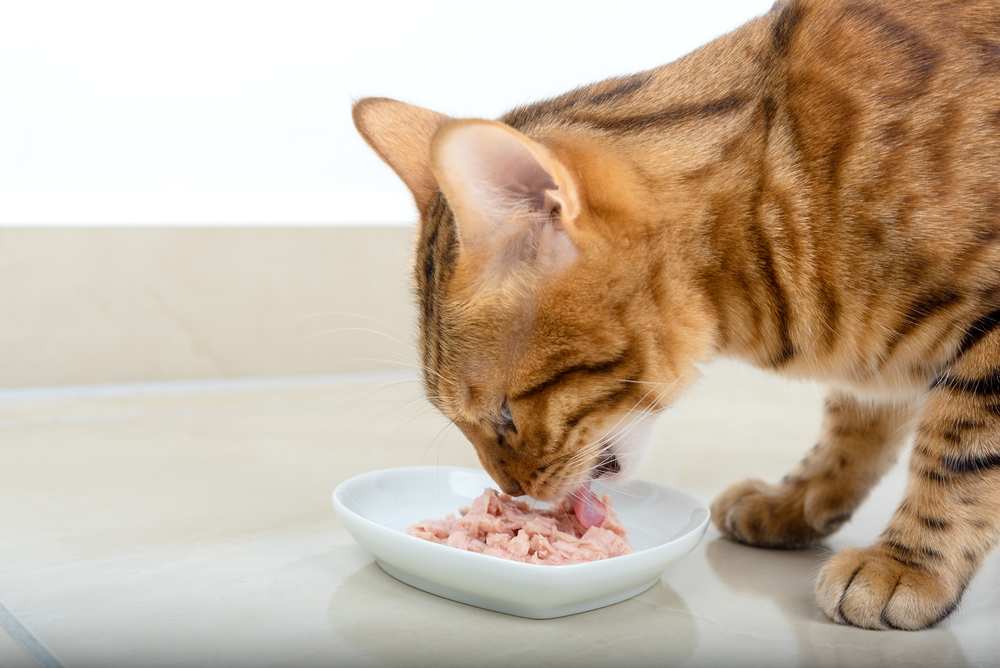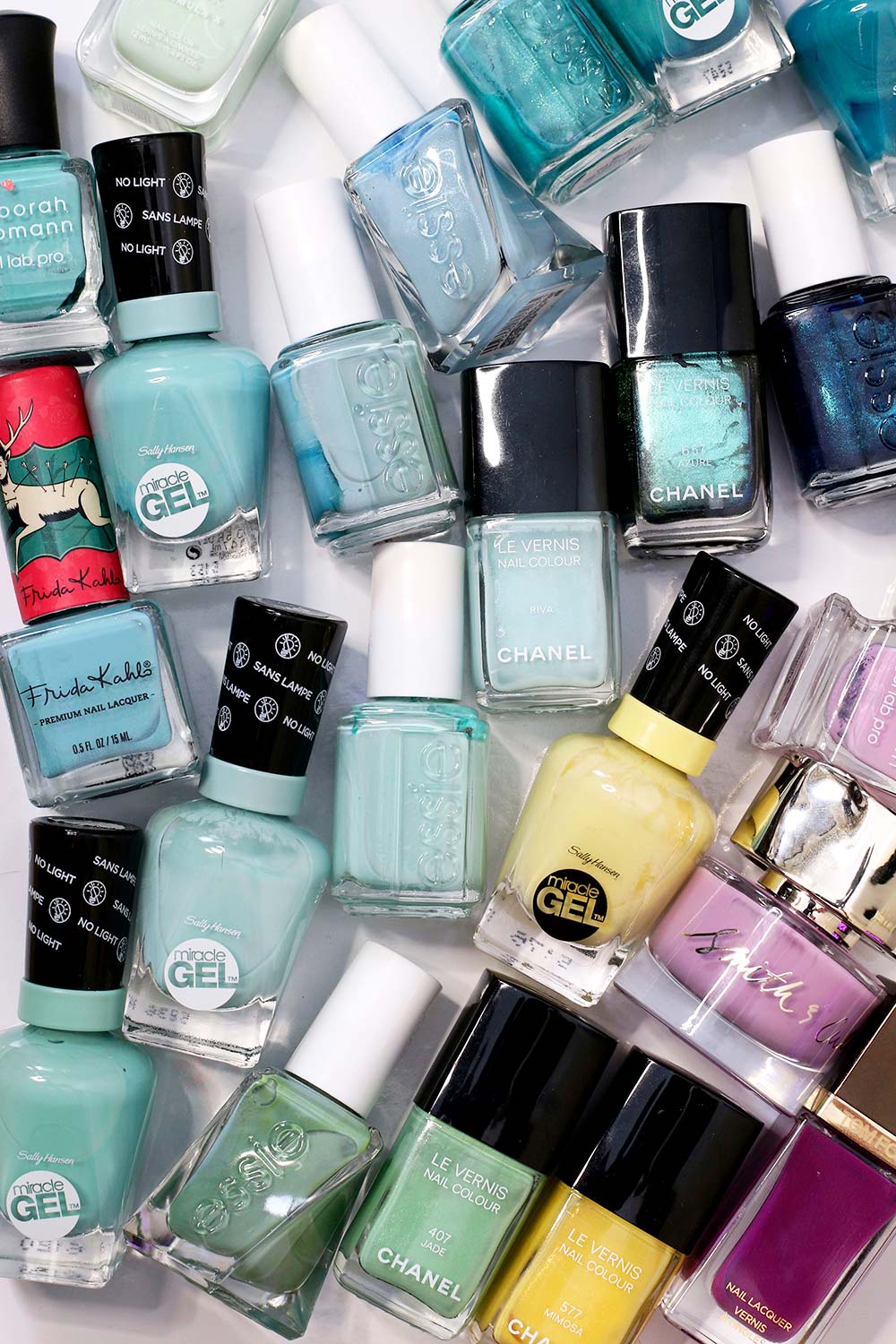
The information is current and up-to-date in accordance with the latest veterinarian research.
Learn more »
The clock starts ticking as soon as you open your cat’s can of food. Feline wet food will grow bacteria, accumulate bacterial toxins, and spoil much faster than dry food.
Generally, wet cat food can only stay out for around 2 to 4 hours before becoming potentially dangerous for your cat to eat. However, you can safely leave it in the fridge for 3 days. We’ll explain how long you can leave wet cat food out and offer tips for keeping your cat healthy and safe.
How Long Can You Leave Wet Cat Food Out?
Wet cat food usually contains roughly 80% moisture and plenty of organic material, making it ideal for microbes to breed. While mold doesn’t begin growing for at least 24 hours, bacteria can double in only 20–30 minutes under optimal conditions, quickly making food unpleasant and hazardous.
Image Credit: Jiri Hera, Shutterstock
Dangers of Leaving Wet Cat Food Out
Don’t leave wet cat food out for more than 4 hours when the room temperature is above 50°F. Bacteria like Salmonella, E. coli, and Campylobacter thrive as temperature, nutrition, and moisture rise, and wet food offers the ideal environment for contamination. If the room is hot. humid, or poorly ventilated, spoilage can accelerate, with food often going bad in as little as 2 hours.
As wet cat food goes bad, it dries and gels to give the food an unpleasant texture and taste. Paired with the cat’s natural aversion to spoiled food, this is often enough to keep them from eating an old meal, lowering the risk of illness. However, if they do choose to eat spoiled food bacteria can lead to infection of the gastrointestinal tract. If mold has grown on the food there is the risk of mycotoxins causing signs of toxicity from tremors to vomiting.
Signs of Foodborne Illness
Age and health status can affect a cat’s susceptibility to illness, as the potential is higher for young, senior, or immuno-compromised pets.
Depending on the pathogen, food poisoning can be apparent within a few hours or several days after your cat eats the contaminated meal.
Signs of bacterial infections include:
Vomiting and diarrhea
Loss of appetite
Lethargy
Fever
Abdominal pain
Cats can also spread infectious microbes to others in their stools or saliva even if they don’t get sick, putting the entire house at risk if their food spoils. Food poisoning can cause severe complications, including sepsis, which can, in extreme cases, potentially turn fatal.
Image Credit: Kginger, Shutterstock
How to Store Leftover Wet Cat Food
Bacterial growth slows considerably in cold temperatures, so if your cat can’t finish a whole can of wet food in one sitting, you can pop the leftovers in the refrigerator. Cat food can last roughly 3-5 days in an airtight container when the fridge is 40°F.
For convenience, you can buy inexpensive silicone lids that firmly seal an unfinished can, keeping it fresh for later.
How to Get Your Cat to Eat Their Food
Since you have a short window to leave wet cat food in your pet’s bowl, establishing a routine will make your cat more likely to eat when you serve them. Give your cat their food at the same time every day, and try not to leave it for more than 30 minutes. It’s best to feed your cat twice a day.
If your cat hasn’t eaten it all, save the rest until the next mealtime. Your cat will eventually learn not to waste time when you feed them. They may be leaving food because of too large portions, so check the feeding guide and talk to your vet about how much they should eat.
If your cat doesn’t find the wet food appealing, try putting it in the microwave for 10–15 seconds. Cats enjoy warm food, and a quick zap can make it more enticing, especially after you take the food out of the fridge. You may also have to switch to dry food or a combination of wet and dry to give your cat the preferred taste and texture.
Image Credit: Pixel-Shot, Shutterstock
Can You Leave Dry Cat Food Out Longer?
As it only contains 5%–10% moisture, dry cat food is much less accommodating for microbial growth than wet cat food. Its formulation also involves a high-heat process that kills many pre-existing microbes, though contamination can occur at later production stages.
Properly stored and served dry food is convenient for many owners, allowing them to free-feed their cats with few health risks. Though various environmental conditions, such as humidity, ventilation, and the cleanliness of the bowl, can affect the speed at which it spoils, dry food can often stay out all day (or even several days) in optimal conditions. If the dry food gets wet it will spoil faster.
If you leave dry food out, you must still check it frequently for signs of spoilage. Veterinarians recommend emptying the food dish daily, which allows you to clean the bowl and refresh the food to ensure it’s safe and enticing for your cat. Although significant microbe growth can take several days in some situations, pests can contaminate the dish, and food can go stale long before then.
Final Thoughts
Wet cat food’s high-moisture composition provides several health advantages over dry varieties, but the benefits don’t come without a few unique costs. Because wet food can spoil within only 2–4 hours, owners don’t have the luxury of setting and forgetting the bowl, and depending on your routine and your cat’s preferences, it may be an impractical way to feed your pet.
By understanding how long wet cat food lasts and the best practices for its use, you can determine whether it’s ideal for keeping your pet happy and healthy.
Featured Image Credit: Svetlana Rey, Shutterstock






